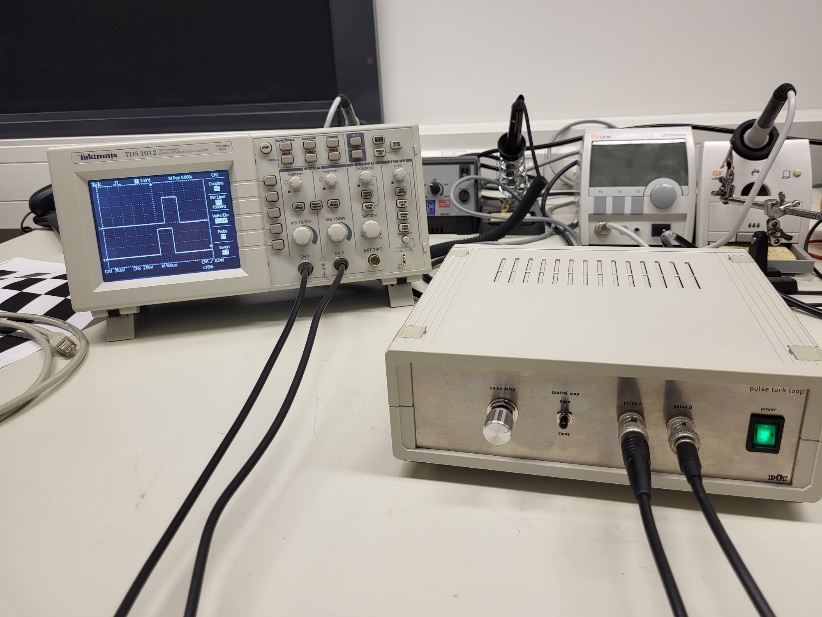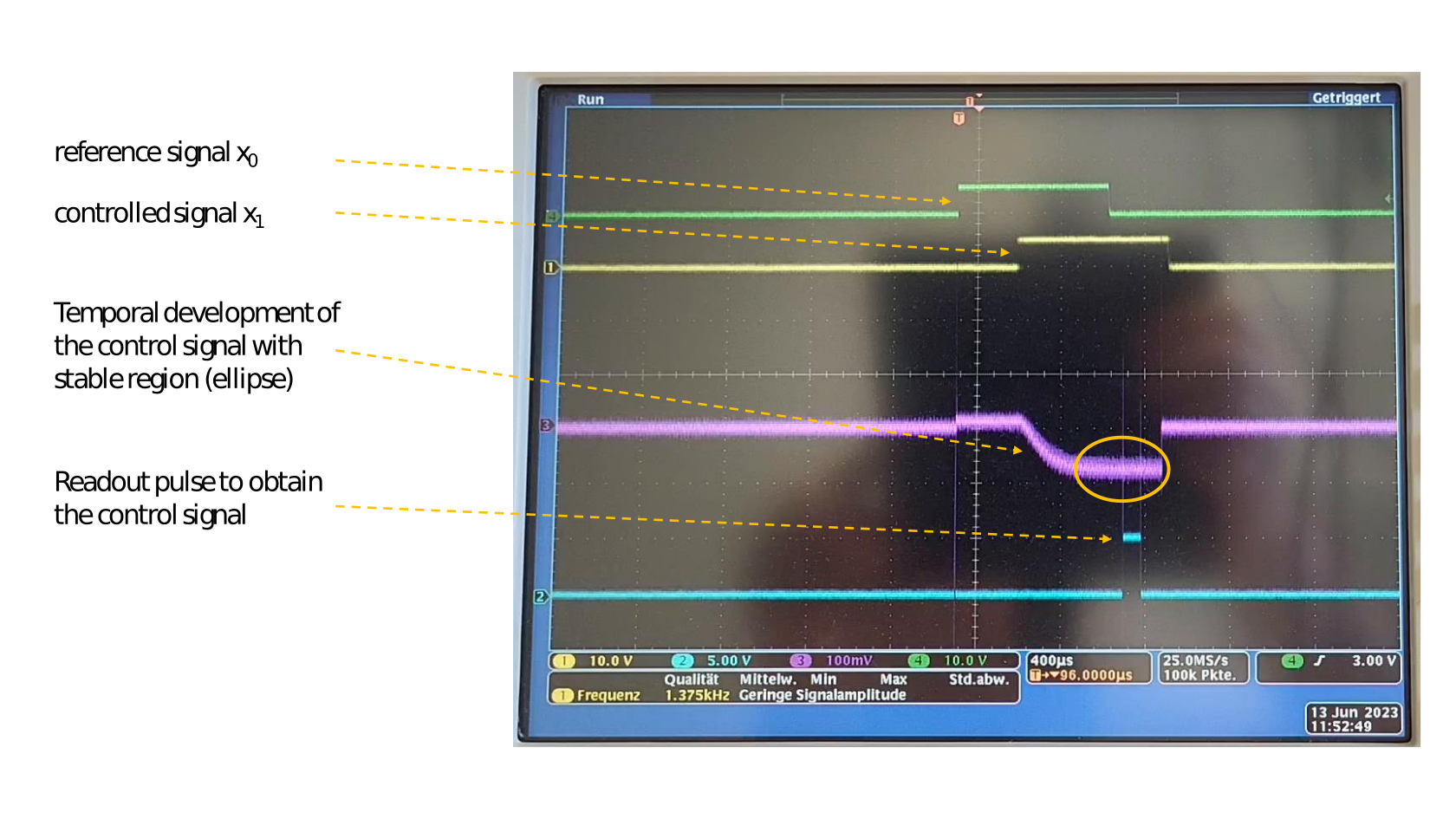The Challenge: Adaptively Synchronize HF-Signals
Signal de-synchronization is a prevalent problem in many high-frequency signal transmission technologies. Solved by ADSYNX using modern AI techniques with minimal demands on the hardware (analogue or digital).

ADSYNX allows for high-frequency applications up to the 100-GHz regime of multiple signals.
ADSYNX hardware is simpler than conventional PLLs, adaptive means fast control in case signal dispersion varies.
The Solution: Controller & ADSYNX Core
Example: Dual-Signal Synchronization Problem

- The Plant initially produces 2 pulses with a delay between them.
- One pulse is defined as A -> reference signal
- Control goal: ADSYNX shifts the other pulse B, the controlled signal, until it is synchronous with A.

Example application domains:
Telecommunication, GPS, Clock-synchronization in wireless transmission, augmented reality, and essentially all systems where synchronous signal transmission is relevant.
Example technologies
Fiber optic-based transmission systems as well as wire-based or wireless transmission up to the GHz regime.
Demo

Note that the video shows the synchronization with a slow speed to allow viewers to visually follow the process.



